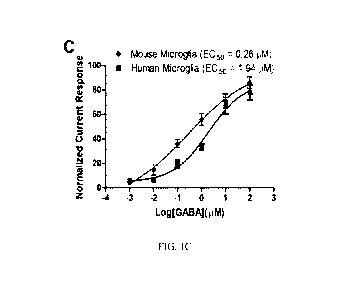Some of the information on this Web page has been provided by external sources. The Government of Canada is not responsible for the accuracy, reliability or currency of the information supplied by external sources. Users wishing to rely upon this information should consult directly with the source of the information. Content provided by external sources is not subject to official languages, privacy and accessibility requirements.
Any discrepancies in the text and image of the Claims and Abstract are due to differing posting times. Text of the Claims and Abstract are posted:
| (12) Patent Application: | (11) CA 3222576 |
|---|---|
| (54) English Title: | FRESHWATER-RECIRCULATING AQUACULTURE SYSTEM |
| (54) French Title: | INSTALLATION DE RECIRCULATION AQUACOLE D'EAU DOUCE |
| Status: | Application Compliant |
| (51) International Patent Classification (IPC): |
|
|---|---|
| (72) Inventors : |
|
| (73) Owners : |
|
| (71) Applicants : |
|
| (74) Agent: | PRAXIS |
| (74) Associate agent: | |
| (45) Issued: | |
| (86) PCT Filing Date: | 2022-06-08 |
| (87) Open to Public Inspection: | 2023-01-12 |
| Availability of licence: | N/A |
| Dedicated to the Public: | N/A |
| (25) Language of filing: | English |
| Patent Cooperation Treaty (PCT): | Yes |
|---|---|
| (86) PCT Filing Number: | PCT/ES2022/070354 |
| (87) International Publication Number: | WO 2023281138 |
| (85) National Entry: | 2023-12-06 |
| (30) Application Priority Data: | ||||||
|---|---|---|---|---|---|---|
|
Disclosed is a freshwater-recirculating system of the type including: a pre-treatment module for pre-treating water from an aquaculture tank; an oxidation module for eliminating pollutants; and a line for recirculating the treated freshwater to the cultivation tank, before passing same through a post-treatment module. The system also includes a module for the electrochemical generation of oxidants, which is disposed in an auxiliary line, outside the main line for recirculating the treated freshwater, and which is supplied by a line for recirculating water coming from the outlet of the post-treatment module, the module for the electrochemical generation of oxidants being uncoupled from the oxidation module but in fluid communication with same by means of a line supplying electrogenerated oxidants.
Installation de recirculation d'eau douce du type de celles qui comprennent un module de prétraitement de l'eau provenant d'un réservoir de culture aquacole, un module d'oxydation pour éliminer les contaminants et une recirculation de l'eau douce traitée dans le réservoir de culture, étape préalable pour un module de post-traitement, qui comprend en outre un module de génération électrochimique d'oxydants disposé dans une ligne auxiliaire, hors de la ligne principale de recirculation de l'eau douce traitée, qui est alimenté par une ligne de recirculation d'eau provenant de la sortie du module de post-traitement, le module de génération électrochimique d'oxydants détaché du module d'oxydation, en communication fluidique avec celui-ci au moyen d'une ligne d'alimentation d'oxydants électrogénérés.
Note: Claims are shown in the official language in which they were submitted.
Note: Descriptions are shown in the official language in which they were submitted.

2024-08-01:As part of the Next Generation Patents (NGP) transition, the Canadian Patents Database (CPD) now contains a more detailed Event History, which replicates the Event Log of our new back-office solution.
Please note that "Inactive:" events refers to events no longer in use in our new back-office solution.
For a clearer understanding of the status of the application/patent presented on this page, the site Disclaimer , as well as the definitions for Patent , Event History , Maintenance Fee and Payment History should be consulted.
| Description | Date |
|---|---|
| Inactive: Cover page published | 2024-01-17 |
| Inactive: First IPC assigned | 2024-01-02 |
| Inactive: IPC assigned | 2023-12-13 |
| Inactive: IPC assigned | 2023-12-13 |
| Inactive: IPC assigned | 2023-12-13 |
| Application Received - PCT | 2023-12-13 |
| Priority Claim Requirements Determined Compliant | 2023-12-13 |
| Letter sent | 2023-12-13 |
| Compliance Requirements Determined Met | 2023-12-13 |
| Request for Priority Received | 2023-12-13 |
| Small Entity Declaration Determined Compliant | 2023-12-06 |
| National Entry Requirements Determined Compliant | 2023-12-06 |
| Application Published (Open to Public Inspection) | 2023-01-12 |
There is no abandonment history.
The last payment was received on 2024-05-14
Note : If the full payment has not been received on or before the date indicated, a further fee may be required which may be one of the following
Please refer to the CIPO Patent Fees web page to see all current fee amounts.
| Fee Type | Anniversary Year | Due Date | Paid Date |
|---|---|---|---|
| Basic national fee - small | 2023-12-06 | 2023-12-06 | |
| MF (application, 2nd anniv.) - small | 02 | 2024-06-10 | 2024-05-14 |
Note: Records showing the ownership history in alphabetical order.
| Current Owners on Record |
|---|
| APRIA SYSTEMS, S.L. |
| Past Owners on Record |
|---|
| ANA MARIA URTIAGA MENDIA |
| INMACULADA ORTIZ URIBE |
| PEDRO MANUEL GOMEZ RODRIGUEZ |
| RAQUEL IBANEZ MENDIZABAL |